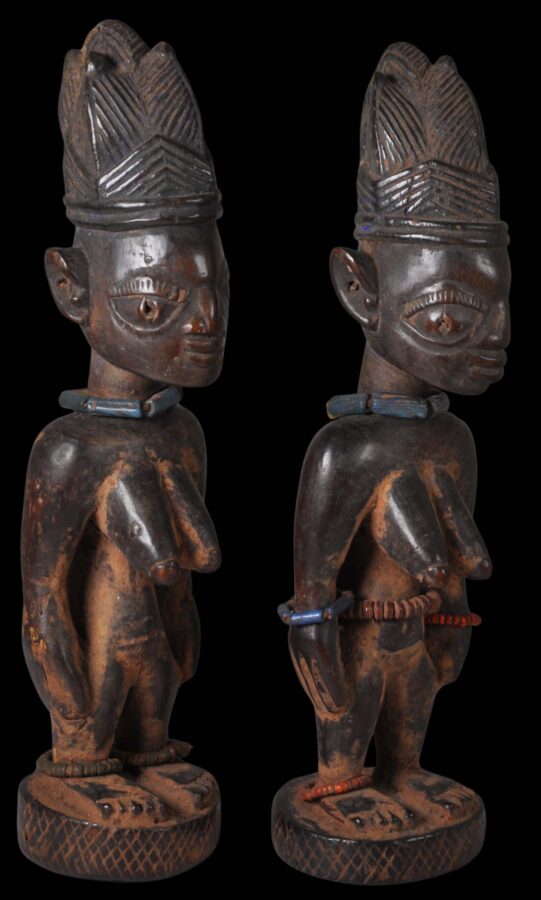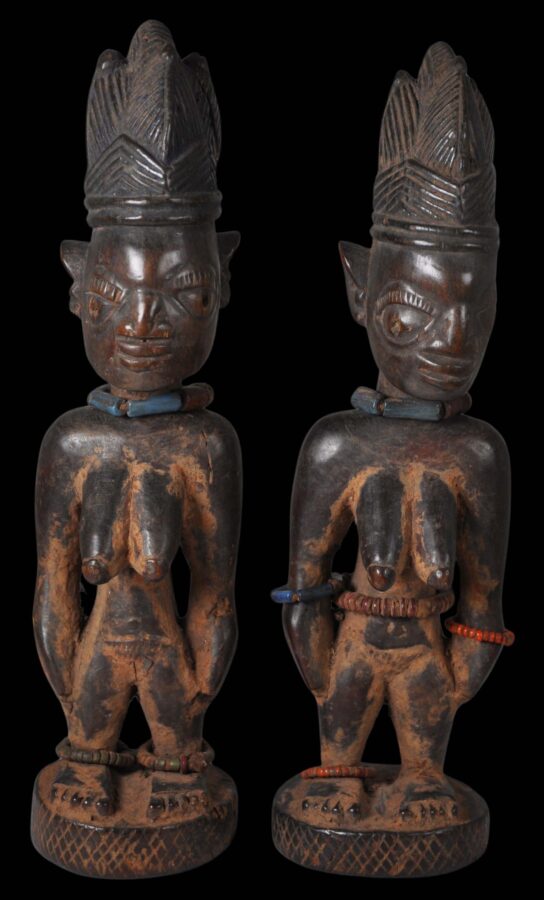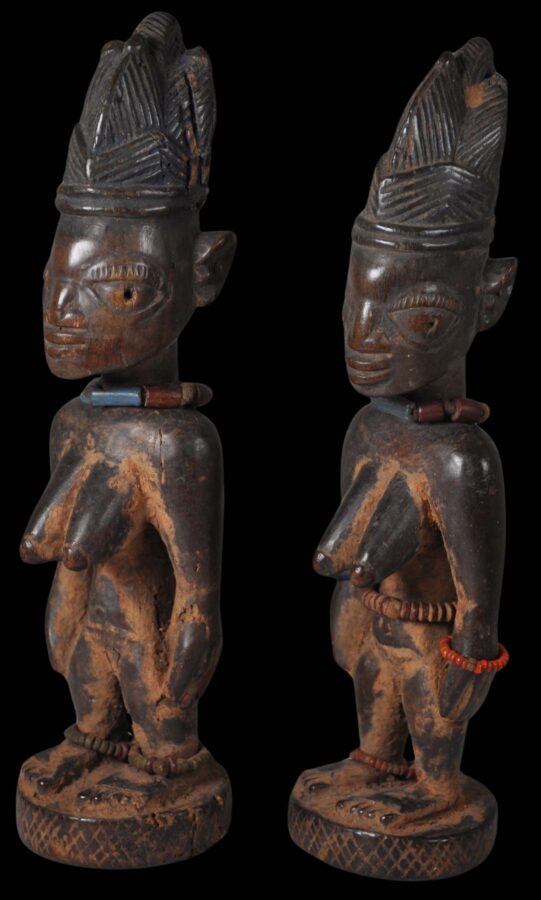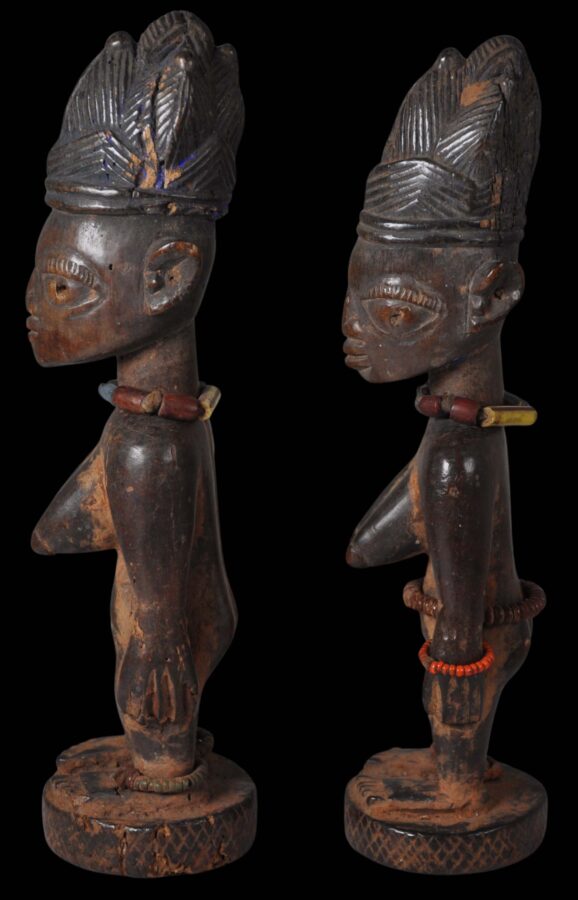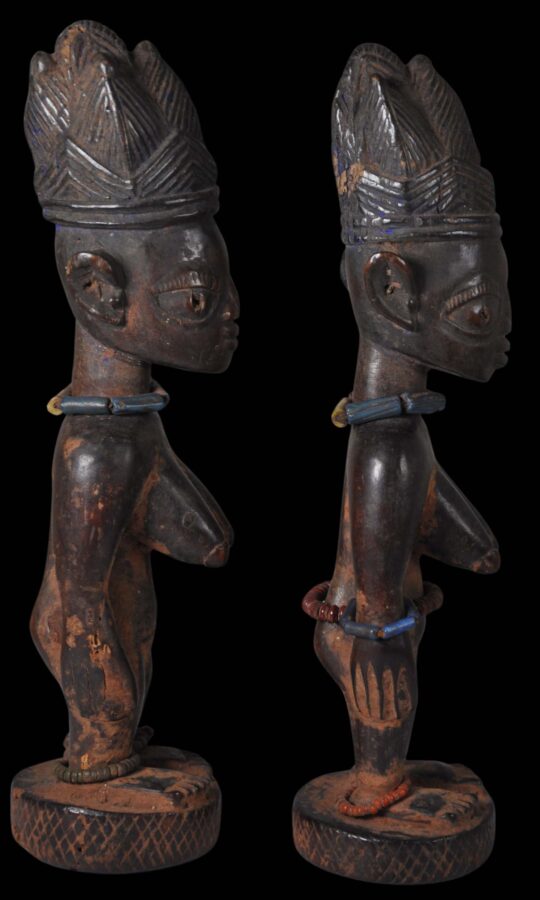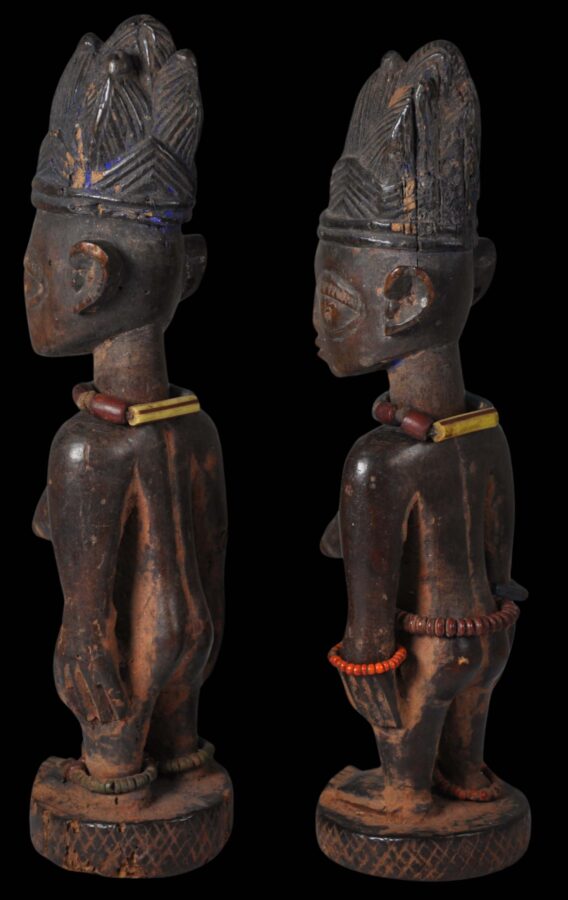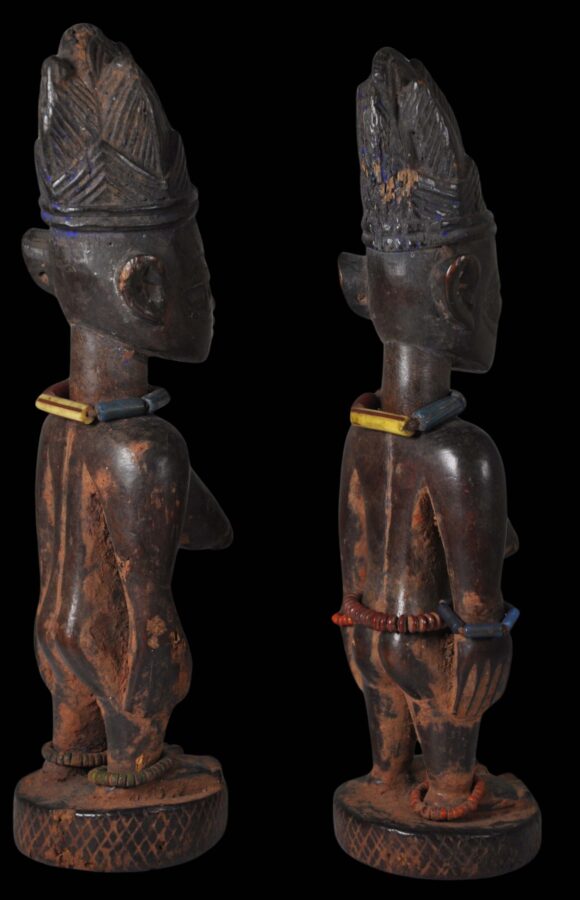Enquiry about object: 9643
Pair of Yoruba Female Ere Ibeji Twin Figures
Yoruba People, Oyo, Igbuke Region, Nigeria late 19th century-early 20th century
heights: 24.4cm and 24.7cm, combined weight 370g
Provenance
private collection, UK
This pair of female Ere Ibeji twins have fine, varying patinas, with contours softened from handling, bathing and caressing. Their significant age is obvious. Also, they are a clear pair and are intended to be identical twins.
Both stand with hands on hips, legs apart, and with protruding, elongated breasts. Their charming faces have prominent jaw lines, wide almond-shaped eyes; flared nostrils; full broad and protruding lips; and strong ears carved so that they jut out. The eyes are particularly bulging and have heavy, thick eyelids decorated with incised eye lashes. Both have large heads: the over-sized head feature is deliberate – the head is where the spirit resides. Among the Yoruba, the over-sized head is associated with one’s destiny, and can be a measure of one’s likely success or failure. Also, over-sized heads relative to the body size are common among infants and babies.
The raised coiffure of each resembles a tiered crown with points topped with small carved wooden balls. The hair is delineated by finely carved grooves and there are traces of Rickett’s Blue, used originally to colour the hair.
Each stands on a raised, round platform decorated with cross-hatched incising.
Both wear necklaces of coloured glass trade beads. One also wears a glass trade bead anklet on each leg. The other has one anklet, two bracelets and a waist band of what might be tiny brown seeds.
Each has an incised triangular patch of pubic hair.
The toes and other crevices of each are caked with tukula powder. This powder was ground from tukula wood and was both a cosmetic and a protection from insects and from the sun. Tukula also was believed to have healing properties and magical powers.
Yoruba people have the highest dizygotic (non-identical) twinning rate in the world. The birth of twins amongst Yoruba women are four times more likely than anywhere else. Unfortunately, the mortality rate of the twins also was high. Ere Ibeji figures were carved as spiritual representations of the twins who died. These figures were commissioned from village carvers, who were also often highly trained priests (Babalawo). The images were carved as adults, rather than as the deceased infants. It is common in African sculpture that representations of children are made with adult-like qualities, including elaborate coiffures, (sometimes) scarifications on the face, fully developed breasts (on female figures), pubic hair, and prominent genitalia. They were usually placed on a shrine dedicated to Elegba (a divine messenger deity) in the living area of the house and fed, bathed and dressed regularly. These figures were particularly special to the mother, who kept them close to her and caressed the figures in a loving manner, hence the wear that genuinely old examples exhibit.
A similar Oyo pair with similar wear, age and patina were offered as lot 55 by Sotheby’s New York, ‘African and Oceanic Art’, November 15, 2002.
The example here are in fine condition. The back of the head of one has minor, old termite loss, befitting its age and authentic nature.
References
Bacquart, J. B., The Tribal Arts of Africa, Thames & Hudson, 1998.
Fagg, W. and J. Pemberton, J., Yoruba: Sculpture of West Africa, Collins, 1982.
Polo, F., Encyclopedia of the Ibeji, Ibeji Art, 2008.
Rowland, A., H.J. Drewal, and J. Pemberton, Yoruba: Art and Aesthetics,Museum Rietberg, Zurich, 1991.


